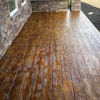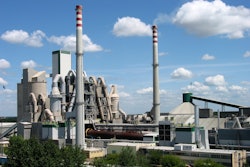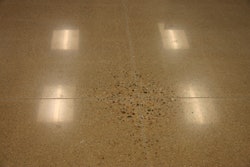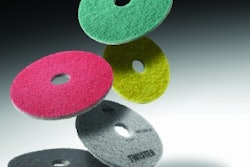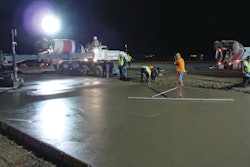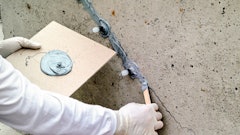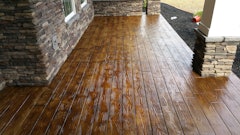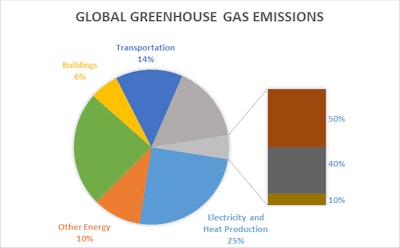
Cement is the world’s most prevalent man made material, with approximately 0.56 tonnes[1] produced annually for every person on Earth. It binds concrete, which is used to construct much of the built environment – including homes, schools, offices, roads, runways, tunnels and bridges.Industrial production accounts for around 21% of all greenhouse gas emissions attributed to human activity (IPCC 2014). Of this, nearly a quarter, or 5% of global emissions, comes from cement production (WBCSD CSI) – making the industry among the largest contributors to climate change. Of the cement industry’s emissions, around 50% can be attributed to the calcification process itself, 40% to fuel used in heating the kiln, and the remaining 10% for grinding and transport (WBCSD CSI).
Because the cement industry has historically been a major contributor to greenhouse gas emissions, there is an opportunity today to significantly reduce emissions through efficiencies and innovations within the sector. GCP Applied Technologies can play an important role through our leadership in the use of connected devices. Our patented VERIFI technology uses sensors, data analytics and automated inputs to not only save customers time and money, but also to significantly reduce their carbon footprint.
How VERIFI Technology Works
VERIFI is a system of sensors and devices that manage the flow rate (slump) of a concrete shipment from the ready-mix plant to the job site. While in transit, the system performs several key functions. It controls concrete mixing, using only the necessary number of drum rotations and harnessing excess energy from the truck’s engine whenever possible. It also measures the flow rate of the concrete, and can provide precise injections of water and admixtures to achieve the specified slump upon arrival at the job site. Finally, VERIFI software tracks the movement of the truck along its route, identifying opportunities for improved fleet efficiency.
Together, these functions significantly reduce the time it takes to deliver concrete, allowing more product to be delivered with the same number of trucks and drivers. VERIFI also conserves materials by delivering concrete that consistently meets specifications, thereby avoiding rejected loads. Consistent quality allows for more efficient mix designs, i.e. with lower cement content and/or higher supplementary cementitious material content. These efficient mix designs can radically reduce cement use, leading to further cost savings and environmental benefits.
The environmental benefits of the VERIFI technology can be thought of in three categories:
- Cement Reduction. Various stakeholders in the production of concrete often add water to achieve the specified slump, but this can weaken the concrete – in some cases leading to concrete placement that eventually fails testing and must be torn out. To avoid such costly scenarios, concrete mixes are routinely “overdesigned” to include more cement than truly needed, in order to compensate for the addition of water. A conservative estimate is that 5% of the cement included in the design of a concrete mix is included only to hedge against these issues. Through precise and reliable quality control, VERIFI can reduce the overdesign needed to consistently meet a given performance specification.
- Waste reduction. NRMCA estimates 5% of ready-mix concrete deliveries in the U.S. are rejected at the job site, typically because they fail to meet the specified slump at the time of delivery. The returned concrete is either crushed and used as road base, made into blocks, or simply discarded. All these scenarios require additional time, fuel use, and a duplication of the load of concrete. Because VERIFI software monitors concrete consistency in transit, and controls precise injections of water or admixtures en route, the concrete is delivered more consistently within performance specifications. Early data indicates that this could reduce rejection rates from 5% to 3.8% – saving time, money, and materials. Since a typical concrete load represents 5500 lbs of carbon dioxide emissions, reducing concrete waste also benefits the environment.
- Fuel efficiency. In ready-mix concrete delivery, fuel use is a significant source of cost and environmental impact. Approximately 23% of fuel in a concrete delivery is used for high-speed drum rotations that mix the concrete. The timing of these rotations is typically controlled by the truck driver – based on minimal information about concrete consistency or fuel efficiency. In contrast, VERIFI software gives the driver instructions on the optimal number and timing of rotations. Early data suggests that the number of high speed revolutions can be reduced by 10%, representing significant cost reductions and associated environmental benefits.
The advantages described above reduce cost, maintain critical performance specifications, and significantly improve environmental performance. In addition, truck drivers using VERIFI software have less need to climb a ladder next to a spinning drum – a clear and important safety benefit.
Key Audiences
With this new category-creating technology, concrete production can shift from an inexact and manual process to a precise and automated one. With that shift comes the ability to provide consistent quality concrete while saving time, money, materials and energy. Not only does this benefit our customers, it also benefits our society and our planet.
A number of stakeholder groups, beyond GCP’s direct customers, have an interest in the social and environmental benefits of using VERIFI. For example:
- Architects are often enthusiastic about green design and sustainability. Through our new and growing Design Assist service, GCP is interacting more frequently and collaborating more closely with architects in the North American market, and is communicating in a more integrated way about Specialty Building Materials and Specialty Construction Chemicals products. This is an excellent opportunity to highlight the advantages of our new process-management technologies, including their substantial environmental benefits.
- Municipal leaders (including mayors, departments of transportation, and purchasing agents) are another important constituency. Many are leading climate change initiatives of their own, and may be able to encourage adoption of VERIFI technology – either through government purchasing or building codes – as part of their broader efforts to reduce greenhouse gas emissions.
- Environmental advocates around the world, including the CDP (formerly known as the Carbon Disclosure Project), the World Business Council for Sustainable Development (which has a Cement Sustainability Initiative), the United Nations Environmental Program, the Massachusetts Institute of Technology (which has a Concrete Sustainability Hub), and many others. These organizations may be willing, or even eager, to support GCP’s efforts with their own time, energy, resources and reputations – if we can identify opportunities to collaborate.
Examples and Data
Example One: During 2013-2016, eight customers using VERIFI technology showed a 10% reduction in the energy used for drum rotation, compared with pre-VERIFI technology estimates based on the 2015 NRMCA survey. This represented 450,000 gallons of fuel savings, or about 4,000 metric tons of avoided CO2 emissions – equal to taking 856 passenger vehicles off the road.[2] And at the prevailing price of $3/gallon, it saved about $1,350,000 in fuel costs. Because these customers represented only about 1% of the US ready-mix market (and a much smaller share of the global market), the potential impact through widespread adoption is much larger.
Example Two: An average of 2044 lbs of CO2 are emitted for every metric ton of Portland cement produced in the US. Using VERIFI technology, a single customer was able to optimize two widely-used mix designs, reducing cement use by 2722 metric tons in 2016 alone – the CO2 equivalent of taking 583 passenger vehicles off the road for a year – and providing a significant cost savings to the producer.
Data:
- Fuel efficiency – With an average number of high speed revolutions of 200 per load, early results indicate VERIFI technology can reduce high speed revolutions by 10%.. This 10% reduction results in an estimated 3 liters of fuel saved per load.
- Concrete waste reduction – With 350 million cubic yards of concrete produced in North America each year, a rejection rate of 5% means that 17.5 million cubic yards are rejected annually – at a cost of around $175M. Early results indicate that VERIFI® can reduce rejection rates roughly 1.2 percentage points.
- Eco-efficient mix design – An average mix design contains roughly 550 lbs of cement; if a conservative estimate of overdesign is 5%, that would be 25 lbs of cement per cubic yard – or 250 lbs per truckload.
Ed. Note: Matthew Nazarenko, Global Marketing Manager of Verifi In-Transit Concrete Management System, GCP Applied Technologies
[1] 4.2 billion metric tons/7.5 billon people
[2] Conversion factor (1MT CO2=.214 passenger vehicles) from the EPA greenhouse gas equivalencies calculator.


